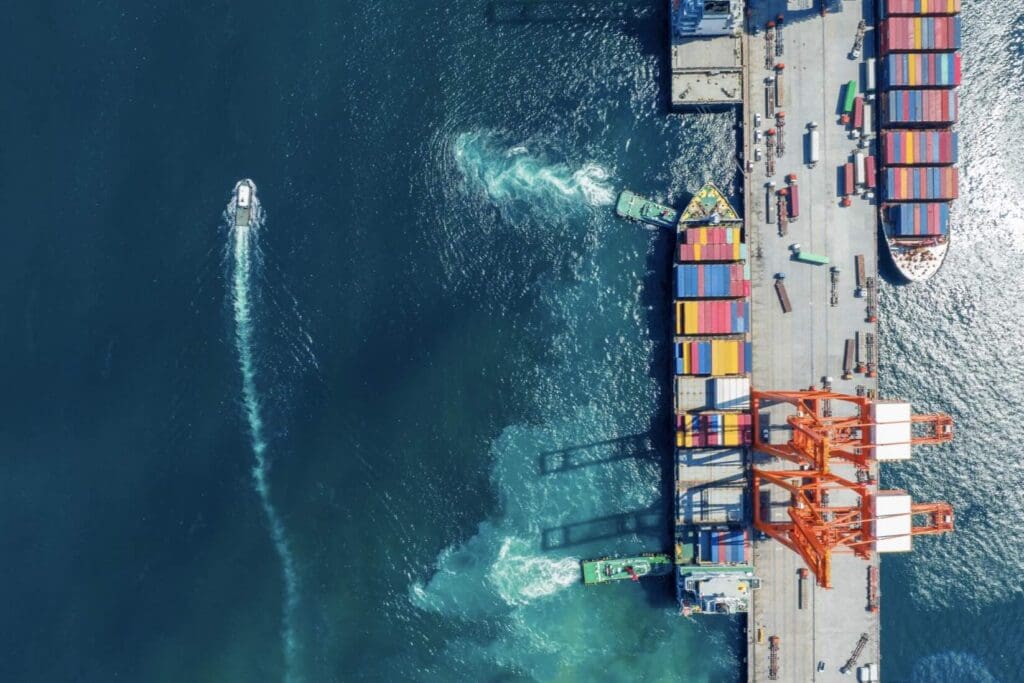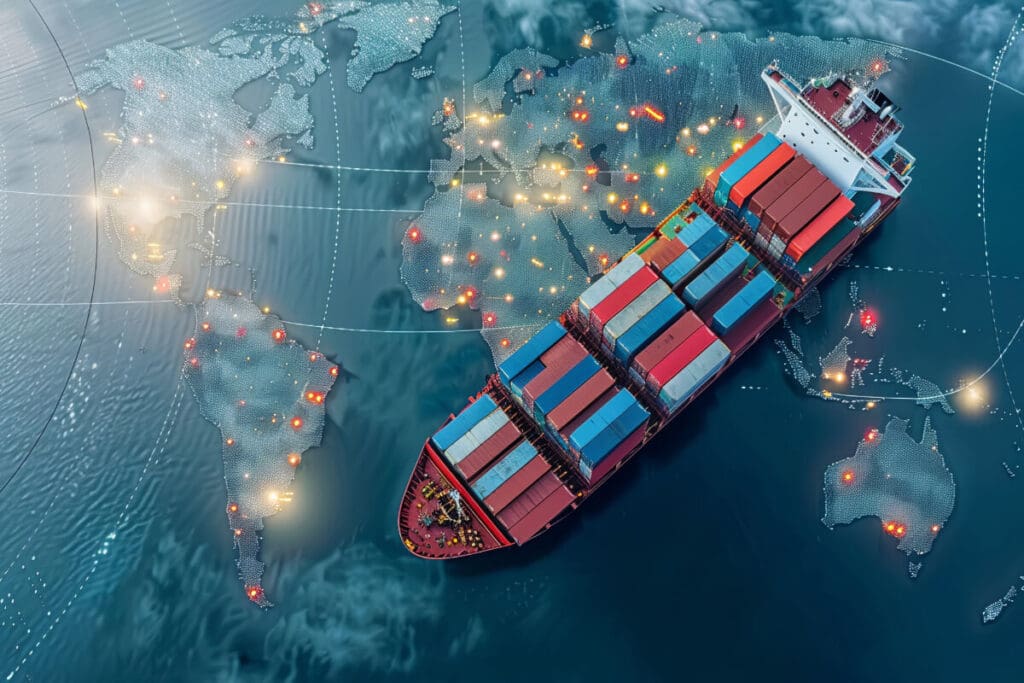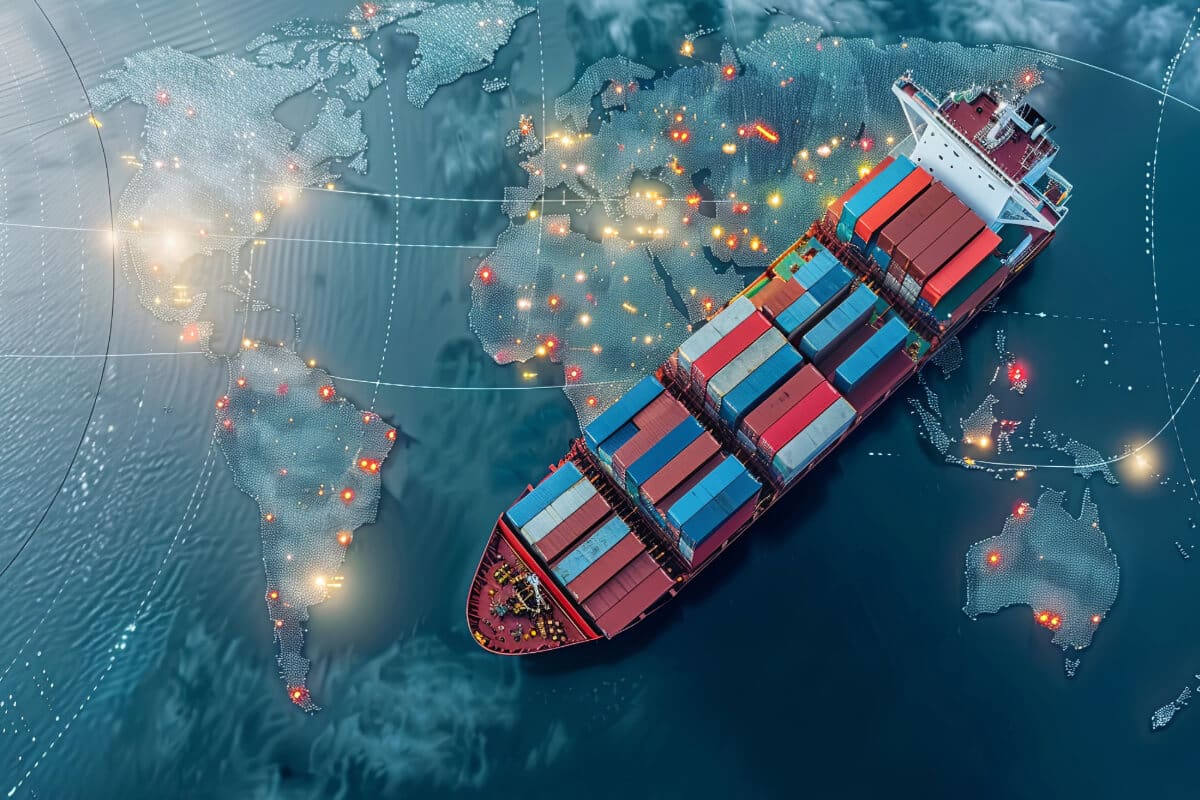In today’s interconnected global marketplace, a comprehensive understanding of the total landed cost (TLC) is more than helpful—it’s an imperative facet of a savvy business strategy. The term “total landed cost” encompasses all the expenses of bringing a product from its origin to its final destination, including production costs, transportation fees, duties, taxes, and other levies.
Peeling back the layers of TLC reveals the intricate tapestry that constitutes global supply chain management and illuminates how every cost, big or small, impacts the overall pricing framework businesses must navigate to remain competitive and profitable. As organizations strive to optimize their operations, knowing the components and influence of total landed cost becomes a cornerstone for surviving and thriving in a vibrant and ever-shifting economic landscape.
Table of Contents
- Definition and Components of Total Landed Cost
- Importance of Total Landed Cost in Pricing Strategy
- Unlocking the Pricing Puzzle: The Indispensable Role of Total Landed Cost
- Warehousing and Storage: A Cost That Can’t Be Overlooked
- Handling and Processing: Ensuring Smooth Operations
- Currency Conversion: Navigating the Global Market
- Opportunity Costs: What’s Foregone in the Process
- Freight Variability: The Wild Card in Shipping
- Quality Control: Ensuring Excellence Has Its Price
- Calculating Total Landed Cost
- Maximizing Profit Margins: The Smart Business Approach to Warehousing and Storage Costs
- Handling and Processing Fees: The Invisible Workhorses
- Navigating Currency Conversion: Making Sense of Cents… and Sense
- The Silent Factor of Opportunity Costs
- Freight Variability: Charting the Course Through Choppy Waters
- Quality Control: The High Cost of High Standards
- Strategies for Minimizing Total Landed Cost
- Fuse Tip-Top Warehousing with Cutting-Edge Inventory Management
- Efficiency in Handling and Processing: Don’t Leave Money on the Table
- Currency Conversions: Playing the Global Market Like a Pro
- Maximize Every Opportunity, Waste Not
- Freight Variability: Understanding the Ebb and Flow
- Quality Control: More Than Just a Cost; It’s an Investment
- A Symphony of Data Analysis and Strategic Thinking
- Impact of Global Dynamics on Total Landed Cost
- Stepping into the Global Dance: The Influence of Market Dynamics on Total Landed Cost
- Warehousing and Storage: A Cost That Can’t Be Overlooked
- Handling and Processing: Ensuring Smooth Operations
- Currency Conversion: Navigating the Global Market
- Opportunity Costs: What’s Foregone in the Process
- Freight Variability: The Wild Card in Shipping
- Quality Control: Ensuring Excellence Has Its Price
- Decoding Total Landed Cost: A Choreography of Data Analysis and Strategic Thinking
- Related Content
Definition and Components of Total Landed Cost
Navigating the Complex Landscape of Total Landed Cost
Embarking on a global trade endeavor? Brace yourself for the complexities of Total Landed Cost (TLC). It’s more than just the price tag on the goods; it encapsulates all the costs that accumulate from the manufacturer’s floor to your storage space. The savvy entrepreneur knows that a deep dive into TLC is not just essential—it’s the bedrock of competitive pricing and profit margins.
Total Landed Cost comprises several components; overlooking even one can be costly. Here’s the breakdown:
- Cost of Goods: This is the amount paid for the product to the supplier, starting at square one. It’s the foundation of TLC and where the saga begins, but it’s far from the whole story.
- Transportation Fees: From ocean freight charges to air freight to inland transportation, every mile adds its own share to the tally. A sharp eye for the most efficient transport routes and methods is vital for trimming excess costs.
- Insurance: Rough seas and bumpy roads are just the tip of the iceberg regarding the risks goods face en route. Insurance protects against loss and damage but also factors into the overall landed cost.
- Custom Duties: Tariffs and taxes levied by governments can be as fickle as the weather. They vary widely by country, product, and time of year. They’re non-negotiable expenses that add a significant chunk to TLC.
- Banking Charges: The financial plumbing that keeps international trade flowing also adds to the ledger. This includes transaction fees, currency conversion costs, and payment processing charges.
- Risk Mitigation: An often-overlooked element, risk mitigation involves the costs associated with safeguarding against supply chain disruptions. Whether geopolitical tensions or natural disasters, buffer stock and diversified supplier networks are insurance against uncertainties.
Untangling the web of Total Landed Cost requires a strategic mindset. Adjusting dials on the fly—like switching transportation modes or renegotiating supplier contracts—can lead to significant savings. Entrepreneurs with in-depth TLC knowledge can spot cost-saving opportunities that others might miss. Plus, there’s tech to the rescue; various software tools offer invaluable insights into these costs, enabling more informed decisions.
Now, consider the cascading effect of Total Landed Cost on pricing strategies. The astute businessperson realizes that TLC is critical in determining the sell price. Get TLC right, and it’s smooth sailing toward a competitive edge and customer satisfaction.
The bottom line? Total Landed Cost is not just a bunch of numbers added together. It’s a dynamic, pulsing entity that demands constant attention. The imaginative play is to monitor, optimize, and re-evaluate regularly, ensuring that your business’s backbone—its profit margin—remains robust and healthy in the tumultuous world of global commerce.

Importance of Total Landed Cost in Pricing Strategy
Unlocking the Pricing Puzzle: The Indispensable Role of Total Landed Cost
Crafting the perfect pricing strategy is akin to solving an intricate puzzle where every piece matters—and the keystone piece? Total landed cost (TLC). Entrepreneurs must grasp the full scope of TLC to stay competitive in the hustling business arena. Understanding all the elements contributing to the final product cost ensures that prices meet market expectations without sacrificing margins.
Warehousing and Storage: A Cost That Can’t Be Overlooked
Entrepreneurs must monitor warehousing and storage expenses, such as keeping a watchful eye on a simmering pot. These costs represent the rent or mortgage on the space where goods are stored before they reach the customer. Neglecting to include these fees in the total landed cost can lead to underpricing products and, consequently, a shrinking bottom line. As every seasoned businessperson knows, you must account for every cent spent to make a dime.
Handling and Processing: Ensuring Smooth Operations
The hustle doesn’t stop once the product lands – handling and processing fees are pivotal in transitioning goods from shipping containers to consumer hands. These costs stem from the labor and materials needed to unload, inspect, and prepare items for sale. Precisely including these costs ensures a pricing strategy that keeps the business thriving without undercutting its value.
Currency Conversion: Navigating the Global Market
In our ever-connected world, the import game involves different currencies. The savvy entrepreneur knows that currency conversion costs can erode or enhance profit margins. Exchange rates fluctuate—often unexpectedly—and a strategic pricing model factors in these potential variations to safeguard profits in international trade.
Opportunity Costs: What’s Foregone in the Process
The hustle is about making strategic moves; part of it is recognizing opportunity costs. These are the potential benefits missed when choosing one alternative over another. In pricing, the choice to stock one product over another could have brought in higher profits. Total landed cost isn’t just about the tangible outlays but also the intangibles accompanying every business decision.
Freight Variability: The Wild Card in Shipping
Let’s talk about freight variability—the silent disruptor in logistics. Shipping costs aren’t set in stone; they’re as mercurial as the market. Fuel charges, seasonal demands, and carrier availability all play into this. Secure pricing strategies accommodate these variables by building in contingencies that ensure profitable sailing, no matter the freight cost currents.
Quality Control: Ensuring Excellence Has Its Price
To stand out in a sea of competitors, perfection isn’t a luxury; it’s a requirement—and achieving that excellence comes with a price tag. Factor in the costs of quality control checks and product testing to ensure that what hits the market reflects the brand’s reputation for excellence. It’s not about nickeling and diming; it’s about ensuring that every dollar invested in quality translates into customer satisfaction and brand loyalty.
In the final analysis, the entrepreneurial journey is demanding, where pricing strategies can make or break the venture. Total landed cost isn’t just a series of expenses to be tallied; it’s the lifeblood of pricing strategy, a multi-faceted consideration binding the extensive network of costs to the end-price tag. It’s a dance of digits where precision leads to profit. It demands constant vigilance, an agile mind, and a tactical approach that only astute business minds can master. Tackling total landed cost is not just an option; it’s the bedrock of a successful enterprise and the DNA of savvy profit-making.

Calculating Total Landed Cost
Maximizing Profit Margins: The Smart Business Approach to Warehousing and Storage Costs
When zooming in on the nitty-gritty of total landed cost, warehousing and storage often play the reluctant background artist that can, if ignored, suddenly leap into the spotlight as a budget-sapping diva. Savvy businesses, however, leave no stone unturned. They weave warehousing and storage costs into their financial tapestry with as much care as the more obvious expenses. This isn’t just about square footage; it’s about the wise utilisation of space, temperature control for perishables, and the seamless integration of inventory management systems. Remember, cutting costs on storage isn’t about skimping—it’s about strategizing.
Handling and Processing Fees: The Invisible Workhorses
Think of handling and processing as the diligent stagehands of the product journey. They might not get top billing, but their role ensures the show goes smoothly. For a business to calculate total landed cost effectively, the charges for picking, packing, unloading, and sorting goods must be factored in with precision. These fees can vary widely depending on the complexity of handling required, so understanding the ins and outs of these processes can lead to significant cost savings down the line.
Navigating Currency Conversion: Making Sense of Cents… and Sense
In a market where borders are as fluid as the currencies that cross them, understanding the ebb and flow of exchange rates isn’t just functional; it’s imperative. While calculating total landed cost, businesses must account for the potential impact of fluctuating currencies on their bottom line. They evaluate the best times to exchange funds, consider hedging strategies to lock in rates, and provide a cushion against economic gusts that could otherwise toss their cost calculations into disarray.
The Silent Factor of Opportunity Costs
Opportunity cost is like the shadow of what could have been—a silent consideration in calculating total landed cost. It concerns what businesses are not doing with their resources because they’ve allocated them elsewhere. For example, money tied up in inventory that’s slow to turn over is not being invested in new product development or market expansion. The smart move? Weigh the potential gains of alternative investments against current stock costs to ensure resources are allocated in the most profitable manner possible.
Freight Variability: Charting the Course Through Choppy Waters
Freight rates are as predictable as a game of roulette. Fuel costs, seasonal demand, and carrier availability are just some aspects that can turn the tide on shipping expenses. Businesses that excel in calculating total landed cost often do so by staying abreast of industry trends and patterns, allowing them to forecast and secure favourable freight terms. They also maintain a nimble approach, ready to adjust their sails when the market winds shift.
Quality Control: The High Cost of High Standards
Last, let’s talk about quality control—a silent guardian of brand reputation. It’s a critical component of the total landed cost, albeit an investment in the integrity of the product. Employing rigorous inspection procedures at various supply chain stages might introduce additional costs, but they safeguard against the far greater expenses associated with recalls or reputational damage. This is where cutting corners doesn’t cut it—consistently delivering excellence is key.
In the grand chess game of business, calculating total landed cost efficiently is a move that separates the pawns from the kings. It’s an intricate blend of data analysis, market timing, and strategic thinking. Businesses looking to thrive in the global marketplace will find that mastering this calculation is less of a chore and more of a strategic victory, paving the way for greater profitability and competitive advantage.

Strategies for Minimizing Total Landed Cost
Fuse Tip-Top Warehousing with Cutting-Edge Inventory Management
Warehousing and storage represent more than just a line item on the balance sheet. These spaces are the lifeblood of distribution, dictating efficiency and customer satisfaction. Innovative entrepreneurs treat warehouse space as a cost center and a strategic asset. They optimize every square inch with state-of-the-art inventory management systems that accurately track, stack, and roll out products.
Efficiency in Handling and Processing: Don’t Leave Money on the Table
The handling and processing phase is ripe for optimization, as seamless operations can significantly reduce costs. By streamlining picking, packing, unloading, and sorting procedures, businesses can dole out services like clockwork, reducing time and labor expenses. The trick lies in harmonizing these operations with technology—think scanners and automation that propel throughput while curtailing errors.
Currency Conversions: Playing the Global Market Like a Pro
Currency fluctuations are a gambler’s roulette for the unprepared, but a strategic market player uses savvy hedging strategies to mitigate risk. By locking in favorable exchange rates and predicting market movements, businesses can shield themselves from unexpected costs that eat into profits. It’s all about staying ahead of the game and turning the volatility of the currency market to one’s advantage.
Maximize Every Opportunity, Waste Not
Opportunity costs manifest when resources are tied up when they could be deployed elsewhere for better returns. Sharp operators assess these costs keenly, making calculated moves to allocate resources that promise the highest returns. This process includes evaluating whether dollars are better spent on advancing core competencies or auxiliary services supporting the main show.
Freight Variability: Understanding the Ebb and Flow
Shipping isn’t just a matter of course but an arena of fluctuating costs where insight into industry trends and patterns could save a fortune. Businesses that succeed prepare for freight variability by forecasting demand, planning inventory flows, and maintaining the flexibility to shift gears as needed, turning potential chaos into choreographed logistics ballet.
Quality Control: More Than Just a Cost; It’s an Investment
Quality control isn’t cheap, but it’s an investment that protects brand reputation with its weight in gold. By incorporating rigorous inspection procedures, businesses ensure that customers receive excellence. Remember, the cost of stellar quality control is far less than the price of resolving customer complaints or, worse, a tarnished brand image.
A Symphony of Data Analysis and Strategic Thinking
Calculating total landed cost goes beyond pencil-whipping numbers on a spreadsheet. It takes a sharp analytical mind to dissect data, spot cost-saving patterns, and make informed, strategic decisions. The goal? We deliver top-drawer quality at competitive prices while keeping a watchful eye on the bottom line.
The savvy entrepreneur knows that market timing, combined with a keen understanding of Total Landed Cost, is not just a race to the lowest price point but a journey to stake a claim in competitive superiority. As such, they maneuver through the intricacies of warehousing, handling, currency fluctuation, opportunity cost, and much more with finesse—always seeking a lucrative nexus between cost containment and impeccable service delivery.
Ultimately, the market doesn’t just reward the lowest price; it exalts the most value. And so, the expedition continues, as agile businesses perpetually explore new ways to trim their Total Landed Cost, ensuring that their voyage in the commercial sphere remains profitable and distinguished, sans the need for a recapitulation.

Impact of Global Dynamics on Total Landed Cost
Stepping into the Global Dance: The Influence of Market Dynamics on Total Landed Cost
Navigating the intricate web of global market dynamics is akin to dancing a complex tango, where one misstep in understanding total landed cost components can leave your business stumbling. It’s not just about the glittering attire (products) or the dazzling moves (strategies) but also the rhythm set by the orchestra of market forces.
Warehousing and Storage: A Cost That Can’t Be Overlooked
Consider warehousing and storage the dance floor where your products perform. It’s not just square footage we’re talking about; it’s the optimal utilization of space, temperature controls for perishables, and the adoption of savvy inventory management systems that dictate how long your goods stay in the limelight. Costs here vary wildly globally, influenced by real estate trends, technological advancements, and regional demands. Stay on your toes by leveraging data to predict storage needs and minimize costly overstock or under-utilization scenarios.
Handling and Processing: Ensuring Smooth Operations
As the tempo changes, so does the role of handling and processing fees. From picking to packing, unloading to sorting, these steps ensure your products flow smoothly across borders. Yet, they’re laden with hidden intricacies—labor costs, equipment efficiency, and regulatory compliance. Keeping pace with the market’s changing rhythms, businesses must fine-tune their operational processes to uphold cost-effectiveness without skipping a beat on quality.
Currency Conversion: Navigating the Global Market
In a global marketplace, currency conversion swings to the tune of economic forecasts, geopolitical events, and central bank decisions. Savvy entrepreneurs employ cunning hedging strategies to shield their ventures from the unpredictable whirlwind of exchange rates. Ignoring this aspect can lead to unexpected expenditures that eat into profit margins, as much as it can lead to fortuitous savings when played right. A sharp eye on global fiscal policies and agile adaptation to currency swings can mean the difference between a profit feast or famine.
Opportunity Costs: What’s Foregone in the Process
Now, what opportunities are you forfeiting while ensnared in the logistics labyrinth? Allocating resources—be it financial or human capital—to managing the logistical aspects of global trade often comes at the cost of innovation and growth investments. Striking a harmonious balance between operational demands and strategic expansion is key. Those who master this balance can simultaneously navigate their supply chain and chart new territories for business growth.
Freight Variability: The Wild Card in Shipping
Freight rates—the capricious element of shipping—can fluctuate dramatically due to fuel costs, carrier availability, and seasonal variances. Keeping a pulse on industry trends and forecasting methods can prevent the sting of unexpected spikes, especially in a climate where e-commerce has intensified the competition for space on shipping vessels. Notably, businesses that optimize logistics planning, weighing the merit of different freight options, stay in step with the market’s cadence.
Quality Control: Ensuring Excellence Has Its Price
Let’s face it: The spotlight shines unforgivingly on quality. Mishandling quality control can tarnish a brand’s reputation with the swift brutality of a tabloid expose. Implementing rigorous inspection procedures comes with a price tag, but compromising here is tantamount to business harakiri. The relentless pursuit of excellence and the strategic prowess to incorporate these costs into the overall total landed cost calculation distinguishes market leaders from the faltering players.
Decoding Total Landed Cost: A Choreography of Data Analysis and Strategic Thinking
In closing, calculating total landed cost is not a casual two-step but a full-blown choreography that demands keen data analysis and strategic thinking. It is continuous and rigorous and invariably impacts market timing and competitive superiority. Understanding and adjusting to the ebb and flow of these costs amid global market dynamics is not just important—it’s critical. Those who master this art will keep their businesses surging, elegant, and nimble in the grand global marketplace dance-off.

The intricate dance of numbers and logistics that defines total landed cost is not merely a factor in the global supply chain; it is a complex variable that businesses must master to stay ahead in an increasingly competitive world.
Understanding and managing total landed cost is not just about reducing expenditures—it’s about creating a value chain lucid enough to weather geopolitical fluctuations and adaptable to the nuances of international trade. As stakeholders in the global marketplace, companies must harness the power of comprehensive TLC analysis to carve out their niches, to lead rather than follow, and to script success stories that resonate within the broader narrative of global economics and trade.
If you are interested in seeing how Mondoro can help you with your supply chain – we would love to talk to you about how we can help you and be part of your global supply chain.
Find out more about how Mondoro can help you create, develop, and manufacture excellent home decor and home furniture products – don’t hesitate to contact me, Anita. Check out my email by clicking here or become a part of our community and join our newsletter by clicking here.
Mondoro gives out a FREE Lookbook to anyone interested. You can receive a copy of our latest Lookbook by clicking here.
Listen to our Podcast called Global Trade Gal. You can find it on all major podcast platforms. Try out to listen to one of our podcasts by clicking here.
Subscribe to our Mondoro Company Limited YouTube Channel with great videos and information by clicking here.
Related Content
Can A Supply Chain Be Both Efficient And Responsive?
Yes, a supply chain can and should be both efficient and responsive. A supply chain can be efficient by making optimal use of its resources while at the same time remaining responsive to market forces and customer demands.
You can discover more by reading Can A Supply Chain Be Both Efficient And Responsive? by clicking here.
How Do You Load A Dry Shipping Container?
A dry shipping container is a container that is used for 90% of all shipments worldwide. The standard sizes of dry shipping containers are 20′, 40′, and 40′ HC. Each size has different payload weights and loading size limits, so when you prepare to load your container, the container size you choose will make a massive difference in the actual container loading.
To learn more about loading a dry shipping container, you can read our blog on 10 Tips On Loading A Dry Shipping Container, What You Need To Know by clicking here.

